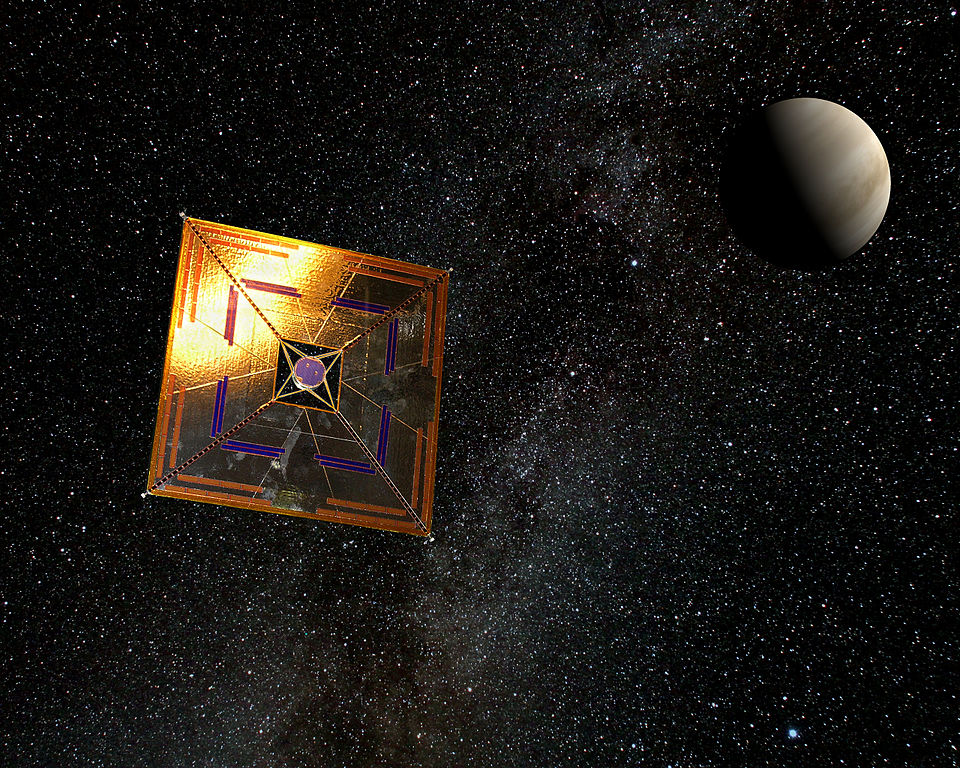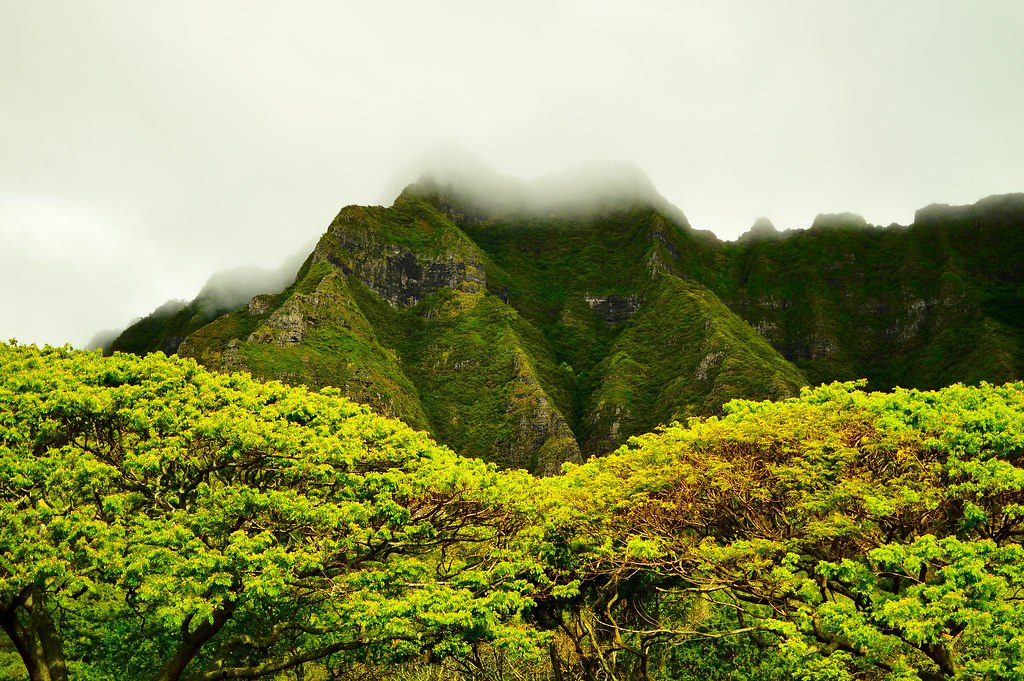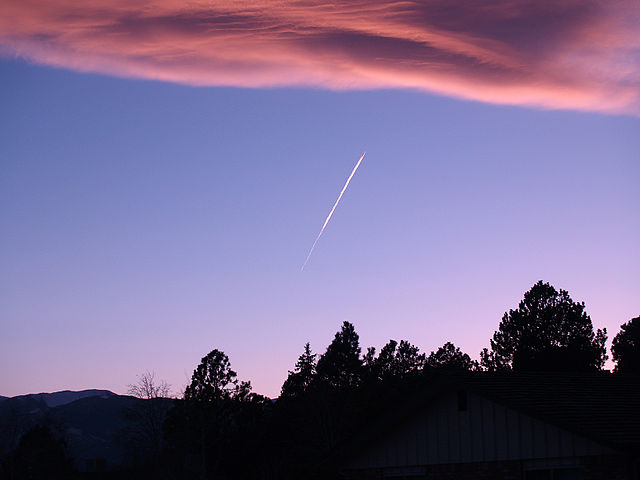Covering Greenland in a blanket is one way to fight climate
Digital Writer/Climate Change Reporter
Friday, June 1, 2018, 1:11 PM - A blanket that can cover the entire country of Greenland? An orbiting screen shielding Earth from the Sun? No, these concepts aren’t from the latest sci-fi movies - they are innovations that scientists say could fight climate change.
Geoengineering is the intentional intervention in the Earth’s climate, typically on a large-scale to deal with the negative effects of climate change, such as too much carbon in the atmosphere and rising temperatures. Lack of international coordination for climate policy, soaring human population, rapid global economic development - our dependence on fossil fuels shows no signs of wavering, and some say geoengineering is our best bet to survive climate change.
In 1965 United States President Lyndon B. Johnson was informed by his scientific advisory committee of a geoengineering strategy that involves scattering reflective sulfuric particles in the atmosphere so sunlight could be reflected away from Earth to prevent further global warming.
Five decades later and the future is now - we politely address our virtual assistants by their name before we propose our request, flying drones deliver us packages to our door, cars drive themselves. Are we really that far from outer space solar energy farms and ice-spraying balloons? Read below for eight bizarre geoengineering solutions to fight climate change.
1) Cover Greenland with blankets

Ice covers nearly the entire country of Greenland. Credit: NASA
Wrapping Greenland in white blankets to reflect warm sunlight away from the ice to slow melting is a solution from glaciologist Dr. Jason Box. The country is 80 per cent covered in ice - this plays an important role in managing atmospheric temperatures and ocean circulation patterns, and changes could threaten coastal communities. If Greenland’s ice melts, sea level is estimated to rise six metres - in Vancouver 250,000 people live within about one metre of average sea level.
Pros and cons: This would stabilize regional oceanic thermal circulation and salinity, slow ice melt, and preserve a large source freshwater, but high levels of maintenance and monitoring would be needed due the country’s large area and intense ‘piteraq’ winds - which translates to ‘that which attacks you’. If Arctic sea waters begin to warm like Antarctica’s waters - the glaciers could melt from underneath, which blankets cannot prevent.
2) Giant sunshade between Sun and Earth

A sunshade would orbit space and partially block sunlight radiating towards Earth to keep temperatures cool. Credit: Andrzej Mirecki
An orbiting ‘space sunshade’ would reflect incoming sunlight so Earth’s temperatures would not further warm in a global warming emergency. Numerous sources including NASA funded research by Dr. Roger Angel where he investigated how 800,000 small spacecrafts could form a 100,000 kilometre-long shield that could last for 50 years.
Pros and cons: Temperatures would cool all over the world and there is already existing research on the feasibility of the technology, but it would cost trillions of dollars, or more than 0.5 per cent of the entire world’s GDP. A growing population means needing to feed more people, and less sunlight would reduce the amount of food that could be grown on Earth, risking mass hunger and could result in conflict over food sources and supply.
3) Drop tree bombs

Forests are known as 'carbon sinks' because they absorb significant amounts of carbon. Credit: Jason Jacobs
Planes would fly over land and drop wax canisters containing seedlings and fertilizer that would explode when they hit the ground and eventually grow into forests, says environmental engineer Mark Hodges, who was featured on Discovery Project Earth. Trees absorb carbon from the atmosphere and are critical source for managing carbon dioxide and ultimately lowering temperatures - logging, agriculture, and urban development are just some of the ways forests are currently being destroyed.
Pros and cons: This technology has already proven to be a solution for regrowing mangrove forests after Hurricane Katrina, however fertilizers could harm water bodies if they unintentionally land in them, as well as other plants and animals. The time for seedlings to grow into forests that absorb significant amounts of carbon could take decades, which may be too slow for the current global warming situation.
4) Pump iron into oceans

Satellite image of an algal bloom south of Florida. Credit: NASA
Fertilizing the oceans with iron would stimulate the growth of phytoplankton - such as algae - that absorb carbon dioxide for their growth. Phytoplankton already play a big role in the carbon cycle and growing their population could improve the health of the oceans and the atmosphere.
Pros and cons: The phytoplankton capture atmospheric carbon and use it to grow, and when they die they sink to the bottom of the ocean - meaning the carbon in the phytoplankton can remain in the ocean's deepest levels and out of the atmosphere for millions of years. But, producing the iron in a form that can be used by the phytoplankton is a process that releases carbon into the atmosphere, so this could actually result in an overall increase in carbon emissions. Iron fertilization produces methane and nitrous oxide, which can cause toxic algal blooms and harm water bodies and aquatic food chains.
5) Ice spraying balloons

A stratollite, or high-altitude balloon that can fly in the stratosphere. Credit: World View Enterprises
Hover-gondolas spraying ice particles into the stratosphere is a climate change solution from Harvard Professor David Keith, who has partnered with World View Enterprises, a hot-air balloon company. The plan is to design and these ice-spraying balloons into the stratosphere so the ice particles can reflect incoming sunlight and prevent the Earth from further warming.
Pros and cons: The stratosphere is a very stable layer of the atmosphere and is where many jet aircrafts fly - the ice could benefit the ozone layer by sharing the work of reflecting sunlight and won’t harm the stratosphere because water vapour naturally occurs. However, a substantial amount of ice would be needed to make a significant cooling impact and the balloons would have to collaborate and coordinate with other jet aircrafts to safely share the sky.
6) Flood Death Valley
Death Valley was once a lake thriving with biodiversity. Credit: Daniel Mayer
The threat of rising sea levels has some wondering - can we flood deserts that are below sea level with ocean waters to protect coastal communities? Death Valley used to be a massive lake and some theorize if water was reintroduced the climate could become tropical, biodiversity could increase, and at-risk cities like New York and Vancouver would be protected.
Pros and cons: While some water would be displaced from the coasts, transporting such a large amount of ocean water would require an immense amount of time, resources, strategy, and funds. In an interview with CBC Dr. Michelle Koppes states that the size of Death Valley is extremely small compared to the volume of sea level rise and it would not make a difference in global sea levels and changes in regional climate would be minimal.
7) Spray sulfuric acid in the sky

Sulfuric acid is able to form aerosols that block out sunlight, which happens when volcanoes erupt. Credit: Wikimedia Commons
Jets would fly to the highest level of the stratosphere and dispense sulfuric acid particles that would combine with water vapour to form aerosols that would reflect sunlight away from the Earth to prevent further warming.
Pros and cons: This process occurs naturally when volcanoes erupt and release sulfur dioxide, which later gets converted to sulfuric acid - in 1815 massive volcanic eruption in Indonesia resulted in global cooling and 1816 is the so-called “Year Without Summer”, which is noticeable in paintings during this period of time. Blocking too much sunlight would harm agriculture and can cause mass hunger, and vast amounts of sulfuric could be toxic in high concentrations.
8) Outer space solar energy farms

Lunar-based solar power systems would allow all energy to be produced and captured in space. Credit: NASA
Unlimited solar energy would power the world - ten 100,000 kilometre-wide orbiting lunar-based solar power systems (LSPs) would beam the solar energy towards Earth using microwave reflectors and be captured by antennas.
Pros and cons: A LSP would significantly reduce and stabilize carbon dioxide levels in the atmosphere, provide extremely cheap energy, and relieve our dependence on fossil fuels, but an LSP system would cost over $240 billion dollars and would require unprecedented international coordination if the world has to share the energy.
9) Atlantropa - Merge Europe and Africa

Sörgel hoped merging Europe and Africa would provide the world power and solve problems like geopolitical conflict and hunger. Credit: Wikimedia Commons
In 1929 German architect Herman Sörgel created a plan that would generate massive amounts of hydropower energy, create new land for living and farming, and form lakes and more precipitation in Africa - build a dam at Gibraltar to connect Europe and Africa by closing up the Mediterranean, which would then dry out. Power would be made from the build-up of potential energy between the different water levels of the Atlantic and Mediterranean, and Sörgel predicted this would solve food scarcity, political conflict, and economic instability.
Pros and cons: While these plans never materialized, other developments such as the Suez Canal, Three Gorges Dam, and Hoover Dam demonstrate the feasibility of large-scale hydro-engineering projects that can change societies. The endless supply of electricity for millions of people and increased fertile land are certainly desirable - however the political and economic conditions may never be conducive to merging Europe and Africa.
When discussions of Atlantropa began Joseph Stalin was beginning his communist rule in the Soviet Union, Europe was recovering from World War 1, Palestine was controlled by British administration, and the world was on the brink of the Great Depression. During times of societal upheaval concerns of energy supply looms - what will it take for us to pursue radical geoengineering solutions?
Sources: PNAS | CBC | The American Historical Review | Discovery Project Earth | IPCC | Forbes



